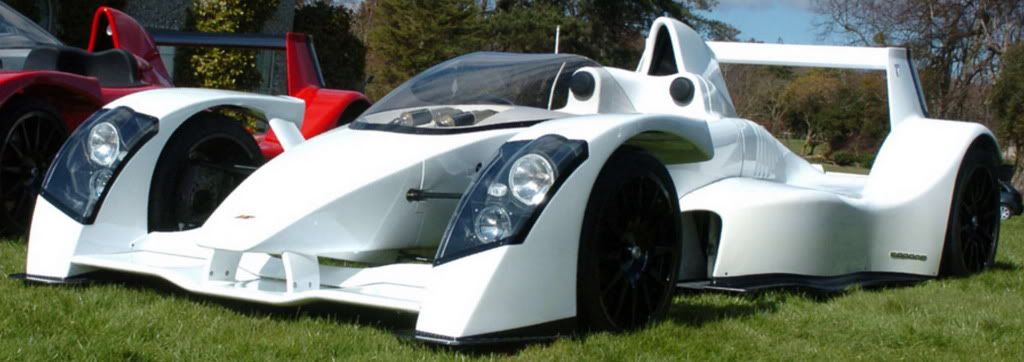9.4.5
9.4.5. ROLL CAGES FOR FORMULA CARS AND SPORTS RACERS
All Formula and Sports Racing automobiles are required to have full roll
cages. Cage may be of two designs, low front hoop (top of steering wheel)
or high front hoop (equal to rear hoop) but with no diagonal brace. Two
(2) seat Sports Racers shall have full cockpit width cages. All tube frame
automobiles shall have both front and rear hoops formed of tubing per
9.4.5.E.4. On automobiles of full monocoque construction, a fabricated
sheet metal front hoop structure may be approved upon specific application to the SCCA. Closed cockpit sports racers cages may be constructed in accordance with 9.4 Roll Cages for GT and Production based cars. All Formula Car and Sports Racing roll cage tubing specifications must meet the current GCR specifications, effective 1/1/98.
A. Main Hoop
The main hoop shall be constructed of tubing per 9.4.5.E.4. The minimum bend radius shall not be less than three (3) times the tube diameter measured from the tube centerline. The main hoop shall not be less than two (2) inches above the driver’s helmet, seated normally and restrained by seat belt/shoulder harness. A straight line drawn from the top of the main hoop to the top of the front hoop shall pass over the driver’s helmet. On Formula cars and single seat Sports Racers the vertical members of the main hoop shall not be less than fifteen (15) inches apart (inside dimension) at their attachment to the chassis. If the hoop does not go to the belly pan, proper gussets and tube triangulation shall be used under its attachment. On monocoque chassis the main hoop shall be welded to mounting plates not less than .080” thick. It is important that these plates be attached to the chassis in such a way as to spread the loads over a wide area. There shall be a plate of equal thickness on the inside of the monocoque with solid rivets or bolts (5/16” minimum bolt diameter) through the non-ferrous material.
B. Front Hoop
Low front hoops must be no lower than the top of the steering wheel.
It is recommended the hoop extend to the belly pan. If not, it shall be attached to the chassis with gussets and triangulation in order to spread the loads. In automobiles of full height (top of the steering wheel) monocoque or composite construction, a steel cap plate, not less than .080” thick must be attached as a rub block.
C. Roll Cage Bracing
1. The main hoop must have two forward braces extending from the hoop and attached to the frame, monocoque, or front hoop. Braces must be attached as near as possible to the top of the hoop but must not be more than six (6) inches below the top and at an included angle of at least thirty (30) degrees.
If these braces do not extend to the front hoop, an additional brace or gusset (14 gauge - .078” minimum thickness) must be installed between the lower frame rail and the upper frame rail at the point of attachment of the forward hoop brace. If these braces do not extend to the front hoop, an additional brace or gusset must be installed at the point of attachment to the main rear hoop or lower frame rail or other major frame member in such a manner as to reinforce the attachment point to help prevent collapse of the frame rail at the point of attachment. These tubes shall be 1” x .080” minimum and gussets shall be 14 gauge - .078” minimum thickness.
Two seat Sports Racers with full width main hoops must incorporate a lateral brace to prevent lateral distortion of the hoop (See figure 12). All bracing on full width cages must be the same diameter and wall thickness as the main hoop. Formula and single seat Sports Racers under 1500 lbs., may use bracing with a minimum dimension of 1.0” diameter by .080” wall thickness. Braces attached to monocoque chassis must be welded to plates not less than .080” thick and backed up on the inner side by plates of equal thickness using bolts of Grade 5 or better with 5/16” minimum diameter.
2. The front hoop must have two (2) braces near its top extending
forward to protect the driver’s legs. It is recommended that this bracing extend to the bulkhead in front of the driver’s feet; but in any case it must be integrated into the chassis to provide substantial support for the front hoop. Full width front hoop bracing shall be a minimum dimension of 1.0” diameter by .080” wall thickness tubing.
Formula and single seat Sports Racers under 1500 lbs., may use tubing with a minimum dimension of 1.0” diameter by .080” wall thickness. When monocoque construction is used as bracing for the front hoop, it must be approved on an individual basis. If a high front hoop is used, it must be similar in shape to the rear hoop and have two horizontal tubes connecting the top of the front hoop to the top of the main hoop. The bracing for the main hoop remains the same.
3. Removable bracing must incorporate connectors of the double-lug, tapered, or muff-type as shown in figures 14, and 15. The double-lug type must include a doubler, gusset, or capping arrangement so as to avoid distortion or excessive strain caused by welding.















